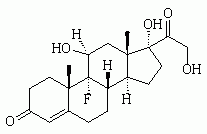In response to the Letter to the Editor by Doson Chua in the April issue (2004:16), I disagree with her statement that the use of steroid therapy is currently advocated for use in all patients with severe sepsis. A large, well-done, randomized clinical trial (1) demonstrated that empiric use of steroids in patients with severe sepsis or septic shock was associated with a significant reduction in mortality. However, this benefit was limited to patients who failed to increase their cortisol levels by 9 in response to corticotrophin stimulation test. Among this group, there was a 10% absolute reduction in mortality when treated appropriately. The evidence therefore indicates (1) a corticotrophin stimulation test on all patients with severe sepsis or septic shock and then (2) empirically treating patients with severe sepsis or septic shock (50 mg hydrocortisone every 6 hours plus 0.1 mg of Flurinet twice daily). In patients with cortisol increases by less than 9 in response to the stimulation test (nonresponders), steroids should be continued for 1 week and then discontinued. Longer term use of steroids may cause increased morbidity.
Reference
1. Anne D, Sebille V, Charpentier C, et al. Effects of treatment with low dose of hydrocortisone and fludrocortisone on mortality in patients with septic shock. JAMA. 2002;288:862-871.
Karen Aloe, RN, MSN, CCRN, CNS
Long Island, NY
COPYRIGHT 2004 American Association of Critical-Care Nurses
COPYRIGHT 2004 Gale Group



